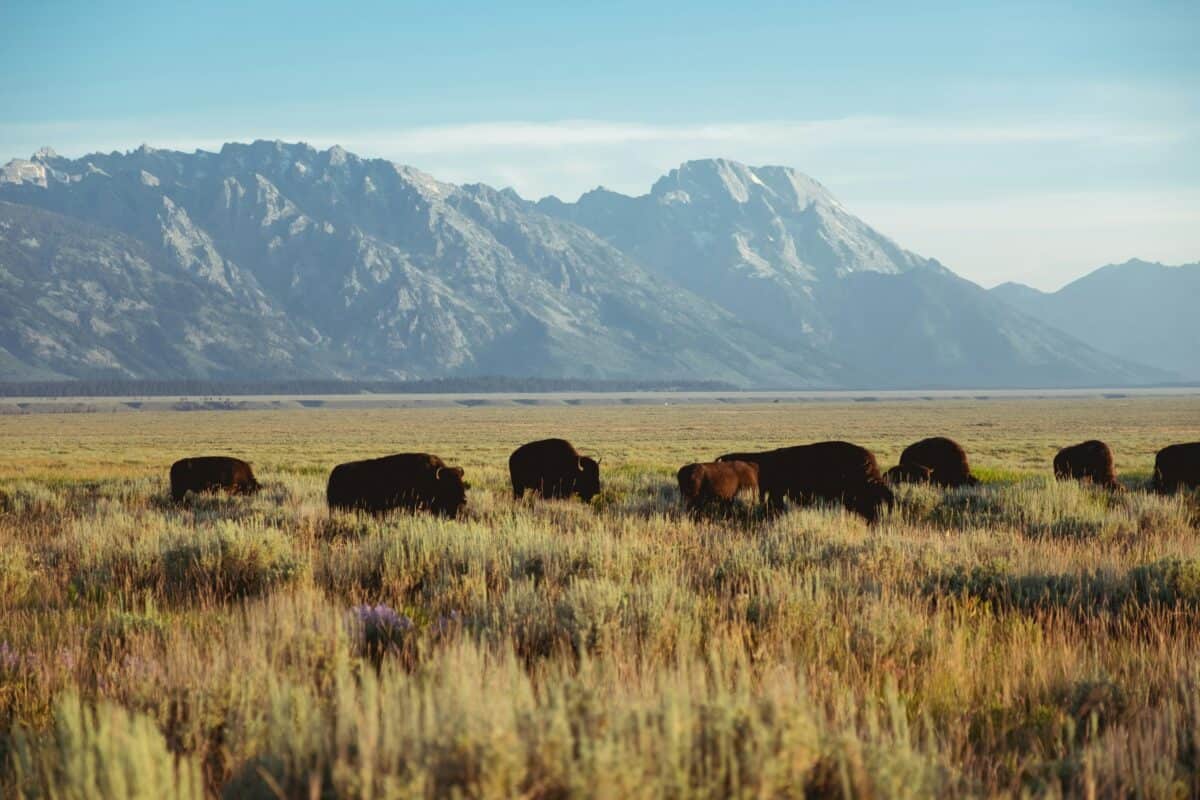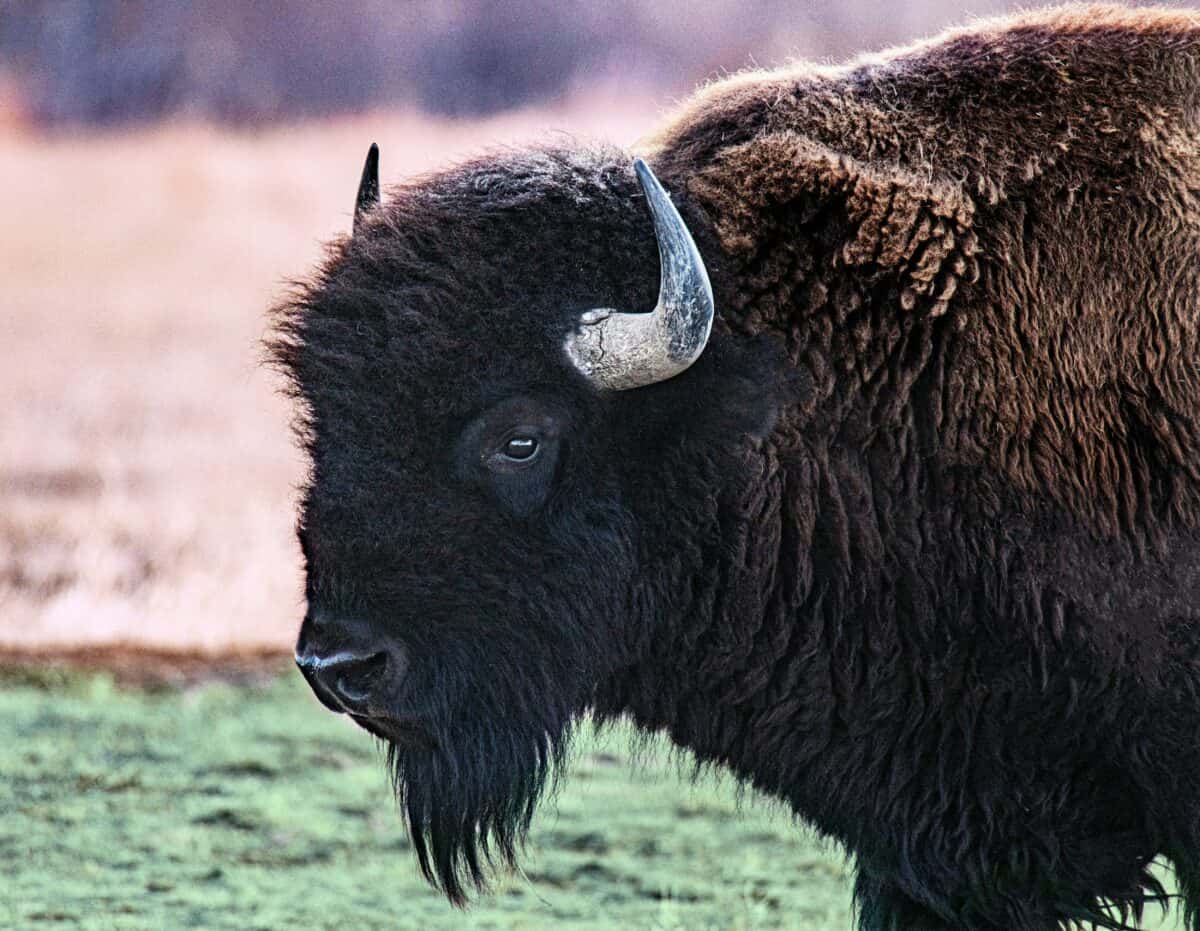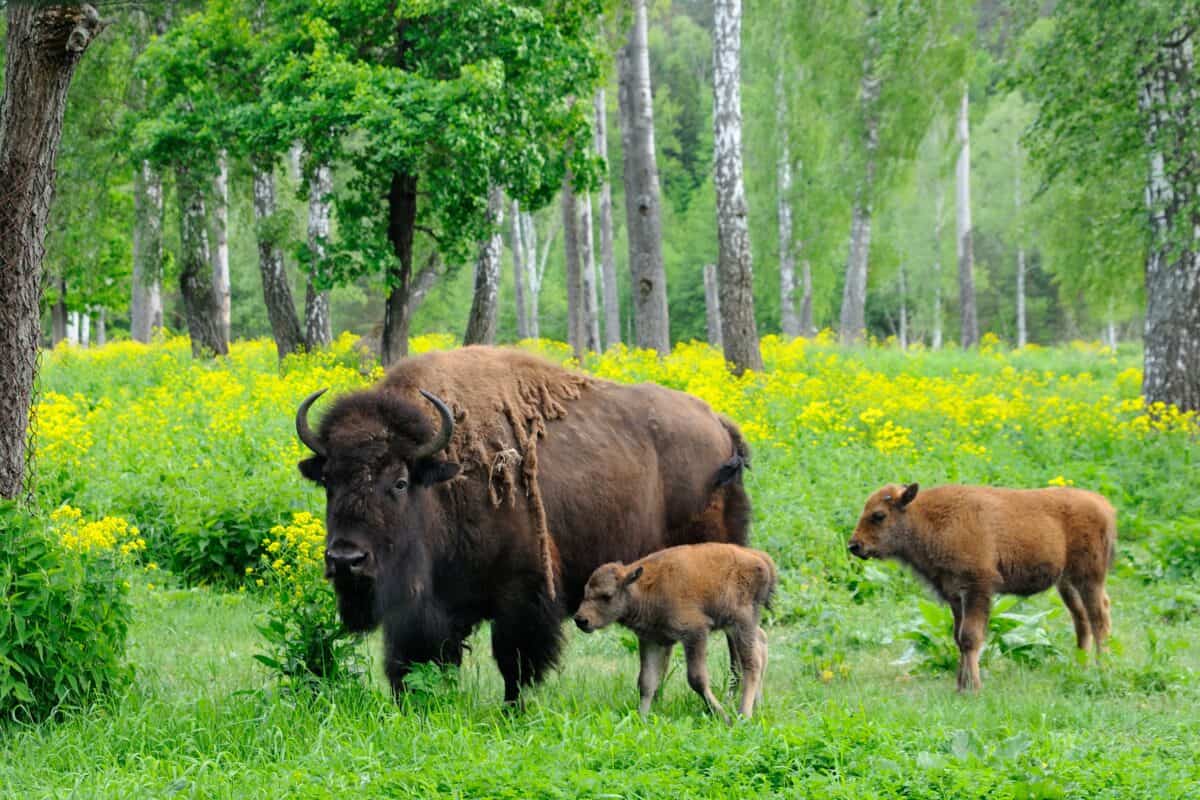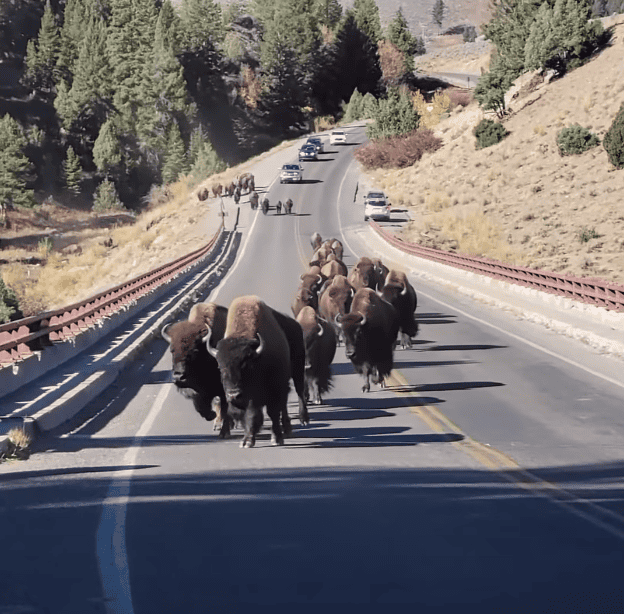In the video above, a couple returning to their car are surprised by a large herd of bison passing by. Every turn of the Yellowstone roads hold the possibility of an amazing interaction with nature’s most magnificent creatures! Join us as we explore the bisons behavioral traits.
Territorial Behaviors Of Bison

Bison are territorial animals. They guard their space from intruders, which include other bison and threats. Male bison take part in aggressive acts to assert dominance during mating season.
Bison mark their territory through cent marking and rubbing against objects. This tells other animals of their claim and chases away potential challengers.
Communication In Bison Herds

Bison live in hierarchical social structures within their herds. The dominant individuals assert their authority and subordinates follow their lead.
Communication among bison is delivered through sounds and body language. This lets them communicate information about dominance, mating readiness and any dangers.
Within these herds, females have strong social bonds which form groups that come together to raise calves and protect them from predators. This contributes to the overall cohesion and stability of the herd.
Protective Instincts

Bison show protective instincts when it comes to looking after their babies. The offspring are known as calves.
Mothers will protect their calves from danger at all costs. Bison calves always stay close to their mothers for protection and guidance. They also learn important survival skills through observation. This tells us the importance of maternal bonds in ensuring the survival of the species.
Bottom Line
Overall, after our exploration of the bison, let’s not forget about nature that surrounds us daily. In Yellowstone, where every corner holds a surprise, we should tread lightly and with respect!
Thanks for reading along, for more, check out our related article link below.
Next up:
Join our Forum for free today!

- Why Do Zebras Have Stripes - July 23, 2024
- Huge Pet Bison Breaks Into House - July 22, 2024
- Giant Black Bear Surprises Beachgoers by Emerging from the Ocean in Florida - July 22, 2024

